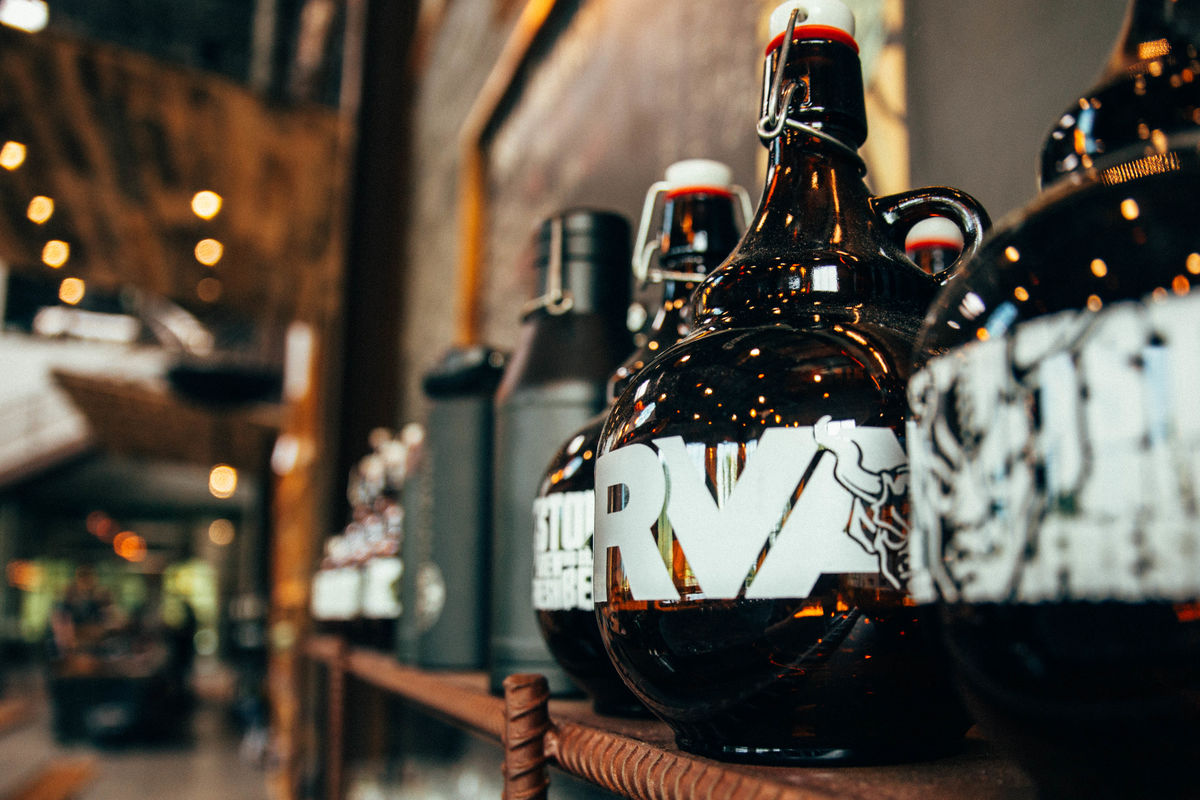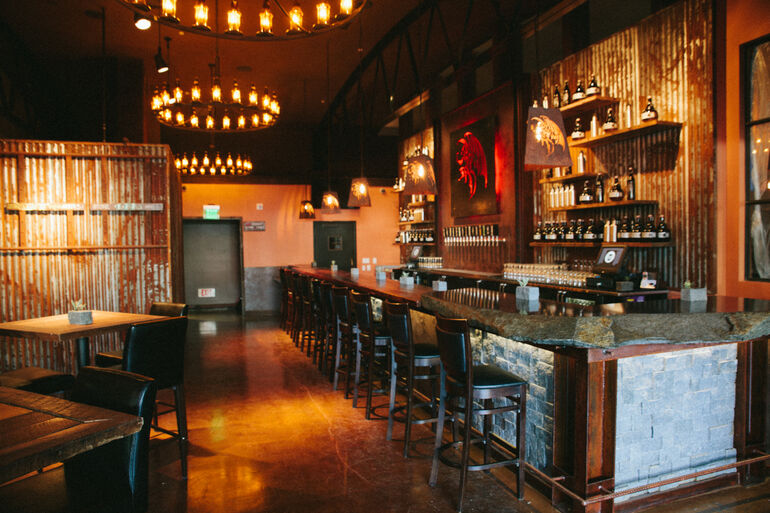Start 14-Day Trial Subscription
*No credit card required

2019 Trends in Craft
Craft beer in 2018 was largely defined by consolidation. While the consolidation of craft brands is not a new story, the past year saw many brands consolidate product lines and distribution footprints. This is a more conservative tack than we’ve seen in years past, and it can be seen as a direct result of increased competition. Many brands were forced to scale back ambitious growth plans, lest they end up like Green Flash, which went from a Brewers Association Top 50 brewery to foreclosure in a matter of months.
Though this means less large-scale regional and national brewing operations, the general implications for the craft ecosystem are positive. For one, breweries are resorting less to clogged and monopolized retail channels in favor of taproom sales, which will encourage the community aspect at the heart of craft.
Further, reducing SKUs will allow for more focused production and, ideally, better beer. Given the surplus of brands versus shelf space, the consumer won’t notice a difference in the number of brands to choose from.
Demographically, things are looking up for craft. No longer just a sanctuary for real-life versions of The Simpsons’ Comic Book Guy, women now comprise 32 percent of the overall craft beer market, with the 21-34 subset representing 15 percent of total craft drinking volume, according to a Revel Systems report.
Further, the report indicates that craft beer drinking among the Hispanic demographic is projected to grow by 31 percent this year.
The coming year’s potential to focus on lighter, more palatable styles should serve to bring in more new beer drinkers, as well as the growth of hard soda and seltzer categories.
With these demographic shifts come new ideas, new taste preferences and new drinking attitudes, which we may see filter back into the entirety of the craft drinking population.

Breweries are resorting less to clogged and monopolized retail channels in favor of taproom sales, which will encourage the community aspect at the heart of craft.
Millennials remain firm as craft’s strongest proponents, comprising 58 percent of the craft drinking constituency. As the majority, this group will largely dictate what styles become popular and what methods of packaging, branding and sales are successful. So, for those in the industry, this is an important group to consider when making business decisions.
As we have seen, A-list hop brands have been on the rise as consumers clamor for juicy, tropical Hazy IPAs. Overall hop production is up slightly from last year, but the race for the big names like Ekuanot or Galaxy makes it tough for smaller breweries to acquire them at an affordable rate. So, when shelling out for these marquis bits of lupulin, be confident that the end product will justify the cost.
Given the highly competitive nature of a 7000+ brewery climate, knowing what you do and don’t do well will go a long way. Last year’s industry outlook emphasized the value in focusing on specific styles and learning to do more within their stylistic confines, if not redefining them entirely. 2019 will weed out breweries producing anything less than great, consistent product, and having a focused stylistic wheelhouse will increase the odds of standing out.
Branding in 2019
Speaking of standing out, there is simply no excuse for anything less than stellar branding at this stage in the game. Beyond beer quality, the can art is probably one of the biggest deciding factors in whether or not a beer will be purchased, and there are hordes of beer-enthused millennial artists who would jump at the chance to have their finest work featured on your packaging at minimal cost.
There seem to be two dominant schools of thought for craft beer label design currently. Labels and artwork can be either eye-catchingly bold and cleanly minimalistic or strikingly colorful and intricately detailed. The increasing popularity of cans means more canvas space for artists to work with compared to bottles, and those not attuned to the importance of catching the customer’s eye from the shelf will be engulfed in an ocean of strong artistic statements.
Further – if you think of your beer as an artistic creation, don’t sell it short with tired fonts and uninspired art. Let the packaging serve as an extension of your beer and your brewery’s culture, and you will attract your ideal customer.
Premium Mentality
For many, craft beer drinking is a statement extending right down to the can they hold. If designer clothing is any indication, brands that can convey a “premium” aesthetic and back it up with consistent quality will be able to justify far higher than average margins.
National Beer Wholesalers of America Chief Economist Lester Jones cites the “premiumization” of beer brands as a defining trait of 2018, resulting in lower production and sales volume but also a dramatic increase in margins.
“After almost 10 years of trading up consumers and premiumization, the overall beer category is now 20 percent more expensive for the average consumer than it was in 2008 and 15 percent more than wine and liquor,” said Jones.
As craft becomes more deeply engrained in American culture and the people learn how to better incorporate beer-drinking into their everyday lives, the ceiling for sessionable beer production grows higher and presents a reliable avenue for brewers to pursue in 2019.
“Time is actually on the industry’s side this time,” said Jones, “as a younger generation of drinkers mature into young working adults and the largest generation ever to retire in the United States looks for the best adult beverages to match their active lifestyles.”

As people learn how to better incorporate beer-drinking into their everyday lives, the ceiling for sessionable beer production grows higher.
Takeaways
Numbers aside, here are some things to keep in mind for 2019: beer is considered more of a “premium” beverage than ever before. Its margins are higher than ever, and “great beer” is no longer solely equated with the amount of ingredients and flavor that can be distilled into a 12-ounce container.
As beer nears the hallowed arenas of expensive wine and liquor, the stylistic lines between these can be blended – think complex Cabernet barrel-aged beers or elegant Brut IPAs. There is a lot of crossover potential to be drawn from other kinds of alcoholic beverages, or even other traditional means of intoxication… perhaps within ten years we’ll see an all THC-beer lineup from a brewery.
Certain styles require far more resources and time than others. A good hazy IPA will sell but consider downsizing your product line if you brew “labor of love,” resource-intensive styles. Part of the reason Gose has become so popular is that it is generally quick to brew, doesn’t require a ton of hopping, and it serves as a neutral palette upon which nearly any flavor combination can be painted for drinkers’ palates.
In essence, the style allows for a high ceiling of creativity with less risk. Stay objective!
Lastly, as the taproom becomes increasingly important for the success of the average brewery, those that offer exemplary in-house experiences will outlast the rest.
Modern point of sale equipment, such as Square or other tablet-integrated software, is not infallible, but it does send a message that your establishment is forward-thinking and makes tipping a breeze, which is quite important if staff is being paid server wages.
Similar to packaging, taprooms are another extension of your brand. Some taprooms stock arcade games and retro gaming consoles, most keep plus-sized Jenga towers on hand, but what’s important is that a taproom has life, vibrancy and energy. Give people things to do or things that make conversation easy. Allow for movement – multiple “zones” within your space, especially an all-seasons outdoor space, can make the difference between having a “happening” spot or a stagnant one.
Breweries that think about the fine details will always outlast those that go straight for the home run. 2019 will be a test of who can consistently please the consumer while keeping staff happy and paid.



